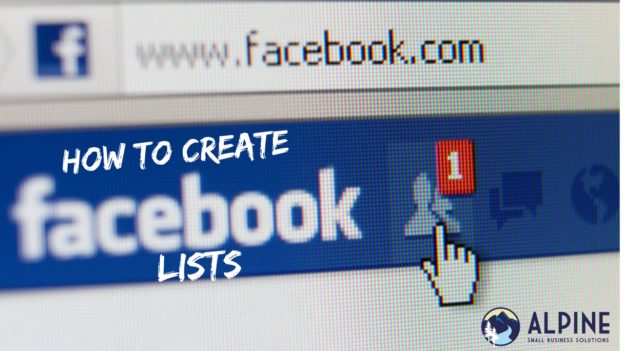My business is my baby. I nurtured it through many struggles, successes, and interesting times. But what happens when you can’t nurture business? What happens to your business, your clients, etc., when the unexpected happens? Getting a plan in place is so important to the success and legacy of your business.
Let me tell you a couple quick stories about how having a plan for the unexpected saved my sanity and my business.

In 2013 on Halloween morning, my mother passed away from cancer. Like many that lost their battle, her cancer journey was awful and long. Being an only child, I was the only one other than my dad who cared for my mom. All our family lived out of state, so the responsibility of the devastation of her cancer weighed heavy on my father and me. Between doctors’ appointments, meal prep, physical therapies, and other tasks, caring for my mom was almost a full time job (not to mention the time I carved out to just sit and be with her so we could spend quality time together). My time was split very thin between my dying mother, my two young daughters, and my growing business . . . as well as all my other relationships with friends and my father. My mother was constantly in and out of the hospital, and there were countless crazy times that required me to drop everything and rush to her side. During this time, my focus was solely on healing and helping my mother. She was the most important thing to me, so my business had to come second . . . third . . . fourth to the more important things in my life which was my family.
 In July of 2015, I was at a peak in my business, but something unthinkable happened. Unlike my mother’s slow and prolonged illness, this tragedy hit me hard, fast and I was completely blindsided. It was a beautiful summer day and like I often did, I went and enjoyed some live bluegrass music with my two daughters and their friends at this quaint outdoor area. The kiddos didn’t want to listen to the entire set list of music and they asked if they could go and record a short movie instead. They are an artistic bunch and often made short films on their cell phones. I said yes as long as they stayed close. They stayed very close, but that didn’t matter because things can happen and change your life in a blink of an eye. My older daughter had an extremely hard fall and experienced a life threatening head injury that required her to be airlifted to Children’s hospital. We spent two days in the ICU and about a week in the hospital, followed by many doctors’ appointments scattered across town. I am happy to report she is okay today, but during those weeks after her injury my focus was on healing and helping my daughter. She was the most important thing to me, so my business again had to come second . . . third . . . fourth to the more important things in my life.
In July of 2015, I was at a peak in my business, but something unthinkable happened. Unlike my mother’s slow and prolonged illness, this tragedy hit me hard, fast and I was completely blindsided. It was a beautiful summer day and like I often did, I went and enjoyed some live bluegrass music with my two daughters and their friends at this quaint outdoor area. The kiddos didn’t want to listen to the entire set list of music and they asked if they could go and record a short movie instead. They are an artistic bunch and often made short films on their cell phones. I said yes as long as they stayed close. They stayed very close, but that didn’t matter because things can happen and change your life in a blink of an eye. My older daughter had an extremely hard fall and experienced a life threatening head injury that required her to be airlifted to Children’s hospital. We spent two days in the ICU and about a week in the hospital, followed by many doctors’ appointments scattered across town. I am happy to report she is okay today, but during those weeks after her injury my focus was on healing and helping my daughter. She was the most important thing to me, so my business again had to come second . . . third . . . fourth to the more important things in my life.
If I lacked a plan for the unexpected, my business surely would have failed (and as a result I would have fallen onto even harder times beyond the tragedies that hit my life). Here are 10 actions to take to be prepared should the unexpected happen to you, your family, or friends.
- Foster authentic relationships with clients. Always work to create an open and honest relationship with your client. Laying the foundation for solid relationships not only makes it
 easier to do business, but makes it easier to be transparent with them if a crisis occurs and you need to renegotiate timelines or contracts. I am blessed with amazing clients that understood life happens, and they were super supportive. When you’re authentic with clients, they will often be understanding and supportive in return. People understand life and shit happens, and being real will gain you more flexibility, trust, and respect with your clients in the long run.
easier to do business, but makes it easier to be transparent with them if a crisis occurs and you need to renegotiate timelines or contracts. I am blessed with amazing clients that understood life happens, and they were super supportive. When you’re authentic with clients, they will often be understanding and supportive in return. People understand life and shit happens, and being real will gain you more flexibility, trust, and respect with your clients in the long run. - Build a crisis team. You’ll want go-to people (or a go-to person, if your business is smaller) that you can confidently delegate to during a time of distress. Make sure your crisis team is equipped with the knowledge, resources, and personality traits to handle being in charge of projects in your absence. Talk over your expectations and their responsibilities to ensure everyone is on the same page long before a crisis occurs.
- Create a guide book to your business. Create a business Wiki or process manual that can serve as the “bible” for your business. Clearly outline how to complete various tasks (more detail is always better). When applicable, include screenshots to help visual learners. You’ll want to cover everything anyone might need to do, both the strategic and mundane. Remember it’s much better to put too much information than not enough. Whoever is in your crisis team will need to reference it to accomplish tasks they aren’t used to doing, so make sure they have all the information they need at their fingertips.
- Make business passwords easily accessible. Not only does your crisis team need to know how to handle various tasks, they need to know the passwords to access the technology to achieve those tasks. I recommend Lastpass, which allows you to easily share needed passwords with your team in a secure manner.
- Invest in a laptop. A laptop offers you incredible flexibility. During my difficult times, I was
 able to do some work away from the home office. While I wasn’t as productive as I was working in the office, I was still able to work some. It’s important not to allow your work to take you away from precious time with family. However, working some during a crisis can be really helpful. It gives you feelings of control and accomplishment to get work done, and can provide a temporary distraction from what you’re dealing with (which can give your heart and brain a much needed break).
able to do some work away from the home office. While I wasn’t as productive as I was working in the office, I was still able to work some. It’s important not to allow your work to take you away from precious time with family. However, working some during a crisis can be really helpful. It gives you feelings of control and accomplishment to get work done, and can provide a temporary distraction from what you’re dealing with (which can give your heart and brain a much needed break). - Be organized. Every important document should be in one place to make it easier on your staff. I use Dropbox and give access to my team and clients. That way, my team won’t have to search through multiple online and physical locations to find what they are looking for. You can also be organized with your method of contact. Use your forwarding call feature from your business line to your cell phone or your team.
- Do a test run. You can plan a solid strategy, but there’s bound to be kinks and hurdles to overcome. A test run will help you discover what areas need to be fixed to get to the smoothest transition during a crisis as possible. Coordinate with your team a day (or preferably a few days) where you simulate your absence due to a crisis. Remove yourself from the office, and only communicate with your staff as much as you think you would during a crisis. This will help everyone see what needs to be adjusted and improved, which makes you better prepared for an actual crisis.
- Invest in disability insurance. Disability insurance is helpful in case you get hurt and can’t work. This will help protect you financially if you are unable to work for any extended period due to an injury.
- Add a legacy contact in Facebook. In the event of death, your Facebook account can be
 memorialized and serve as a place for loved ones to share memories. A legacy contact is a designated person who can write a pinned post for the profile (such as a message on your behalf or memorial service information), respond to new friend requests, and update your profile picture and cover photo. They can also download a copy of what you’ve shared on Facebook. To add a legacy contact (https://www.facebook.com/help/1070665206293088)
memorialized and serve as a place for loved ones to share memories. A legacy contact is a designated person who can write a pinned post for the profile (such as a message on your behalf or memorial service information), respond to new friend requests, and update your profile picture and cover photo. They can also download a copy of what you’ve shared on Facebook. To add a legacy contact (https://www.facebook.com/help/1070665206293088)
Click ![]() in the top right of Facebook and select Settings
in the top right of Facebook and select Settings
In the left menu, click Security
Click Legacy Contact
Type in a friend’s name and click Add
To let your friend know they’re now your legacy contact, click Send
- Take care of yourself. Exercise consistently, maintain a healthy diet, get regular massages, do what you need to make yourself as healthy as possible. This will prevent illness and improve recovery time in the event you do get sick or injured.
While it’s difficult to think about life crisis and death, it’s important to. Creating a plan to deal with a crisis can make a huge difference in how your business, and you, make it through the crisis. I guarantee it’s worth the time and effort to put a plan in place-it will provide you huge piece of mind for the future.



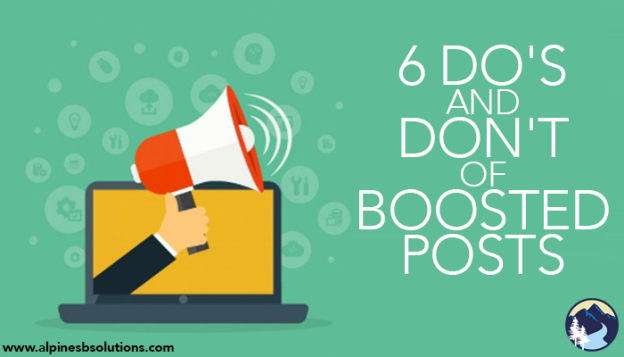

 The Dos
The Dos

 We are all guilty of it. We all have tried to “multitask.” It doesn’t work. You cannot do your best on more than one task at a time. Limit your distractions for periods of “focus time.” Set a timer for 50 minutes, close all the distractions (other open programs, emails, phone etc.), and just work on that one thing for the 50 minutes. Then take a 10-minute break. You can check in on your distractions, walk away, or get a drink, but take that break. Those uninterrupted focus periods allow you to put all your efforts in to one spot. You will get more done just working on that one thing. You can then come back to that task for the next focused period or move on, whatever the case will be, but give you undivided attention to a task for a set period.
We are all guilty of it. We all have tried to “multitask.” It doesn’t work. You cannot do your best on more than one task at a time. Limit your distractions for periods of “focus time.” Set a timer for 50 minutes, close all the distractions (other open programs, emails, phone etc.), and just work on that one thing for the 50 minutes. Then take a 10-minute break. You can check in on your distractions, walk away, or get a drink, but take that break. Those uninterrupted focus periods allow you to put all your efforts in to one spot. You will get more done just working on that one thing. You can then come back to that task for the next focused period or move on, whatever the case will be, but give you undivided attention to a task for a set period. Calls and emails are the biggest distraction for many people. You can spend a lot of time just putting out the fires that come in on email and take that unexpected call. It also means that you didn’t get your tasks for the day completed with focused, uninterrupted time. Find the time best for you and schedule in your day an hour here and there to just return emails and calls. You can use a focus period just to respond to email.
Calls and emails are the biggest distraction for many people. You can spend a lot of time just putting out the fires that come in on email and take that unexpected call. It also means that you didn’t get your tasks for the day completed with focused, uninterrupted time. Find the time best for you and schedule in your day an hour here and there to just return emails and calls. You can use a focus period just to respond to email. We all have a time of the day that is the slump. Some people are early morning people, some of late night people, some are guaranteed to be napping after lunch. Know where your weak point is and plan for it. If you are an afternoon slump person, know it and own it! Prepare for it by having that cup of coffee, or schedule your passion project during that time. If you aren’t prepping and working on something you don’t want to do at that time, you will not work efficiently.
We all have a time of the day that is the slump. Some people are early morning people, some of late night people, some are guaranteed to be napping after lunch. Know where your weak point is and plan for it. If you are an afternoon slump person, know it and own it! Prepare for it by having that cup of coffee, or schedule your passion project during that time. If you aren’t prepping and working on something you don’t want to do at that time, you will not work efficiently. They say however long you give yourself to do something is how long it will take. Put a little pressure on yourself to get things done. You might surprise yourself what watching the clock will do for you. Set a deadline for yourself to wrap up a project and hold yourself to it.
They say however long you give yourself to do something is how long it will take. Put a little pressure on yourself to get things done. You might surprise yourself what watching the clock will do for you. Set a deadline for yourself to wrap up a project and hold yourself to it.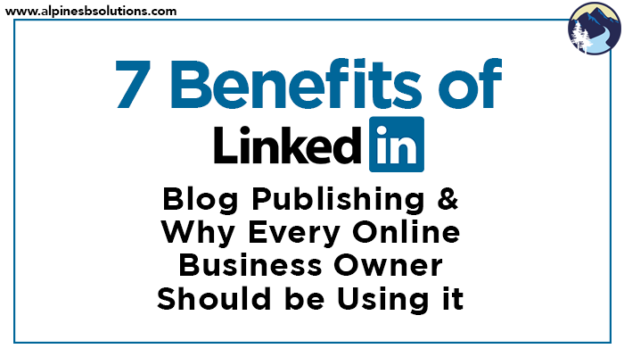
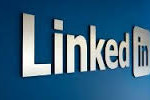 commitment. While it’s usually recommended businesses maintain a blog, it’s not always feasible for every company. In those situations, publishing to LinkedIn is a great alternative. Employees can publish from their LinkedIn pages and then share to the company page to gain benefits of content marketing with less of a time commitment than maintaining a company blog.
commitment. While it’s usually recommended businesses maintain a blog, it’s not always feasible for every company. In those situations, publishing to LinkedIn is a great alternative. Employees can publish from their LinkedIn pages and then share to the company page to gain benefits of content marketing with less of a time commitment than maintaining a company blog.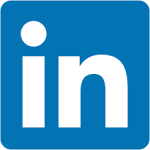 view a blog post given the high volume of spam posts and not secure websites on the Internet. Posts published on
view a blog post given the high volume of spam posts and not secure websites on the Internet. Posts published on 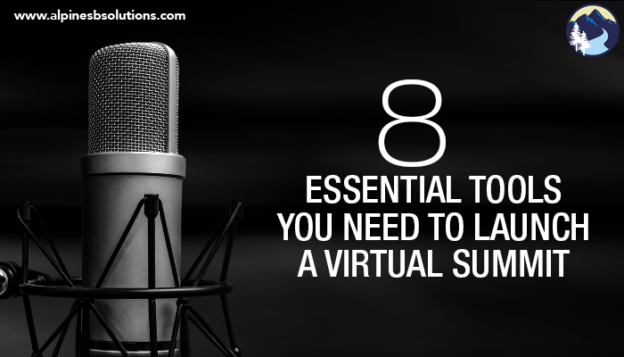
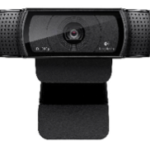 Unlike podcasts, a virtual summit requires a webcam. High quality helps to engage and keep your viewers interested. While most laptops, desktops and phones do have a webcam built in, they are usually not the best quality. Some smart phones do have a great camera, but lack in microphone quality. Besides, it’s much easier to manage broadcasting when you have a set-up at your computer station. Trying to do it all mobile proves to be a challenge.
Unlike podcasts, a virtual summit requires a webcam. High quality helps to engage and keep your viewers interested. While most laptops, desktops and phones do have a webcam built in, they are usually not the best quality. Some smart phones do have a great camera, but lack in microphone quality. Besides, it’s much easier to manage broadcasting when you have a set-up at your computer station. Trying to do it all mobile proves to be a challenge. Webcams almost always come with a built-in microphone, but again the quality will never be as good than if you invest in a separate USB microphone. A microphone is just as important as your video; what good is a virtual summit if nobody can understand a word you are saying? You do not need to dive into professional recording equipment for this. Just look for a microphone that is recommended for podcasts and gaming with noise cancellation.
Webcams almost always come with a built-in microphone, but again the quality will never be as good than if you invest in a separate USB microphone. A microphone is just as important as your video; what good is a virtual summit if nobody can understand a word you are saying? You do not need to dive into professional recording equipment for this. Just look for a microphone that is recommended for podcasts and gaming with noise cancellation. It doesn’t matter what video editing software you use. It is up to you to use whatever tool you feel most comfortable working in. There are complex video editing software costs hundreds of dollars, but there are many free options as well. If you have a Mac computer your computer already comes with
It doesn’t matter what video editing software you use. It is up to you to use whatever tool you feel most comfortable working in. There are complex video editing software costs hundreds of dollars, but there are many free options as well. If you have a Mac computer your computer already comes with You might have to get creative in how you sell your all-access pass because your customers will need a way to log-in to the membership site. An example could include adding these customers to a separate mailing list and giving them a log-in and password to the membership site. This same mailing list could be used to market a new product/service as mentioned in the last article.
You might have to get creative in how you sell your all-access pass because your customers will need a way to log-in to the membership site. An example could include adding these customers to a separate mailing list and giving them a log-in and password to the membership site. This same mailing list could be used to market a new product/service as mentioned in the last article.
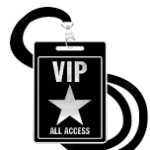 An all-access pass is to your virtual summit as Netflix is to tv shows. This is the most popular way you can increase your revenue via virtual summits. Some people will not able to attend your virtual summit during your limited broadcasting event due to a busy schedule, sickness, or anything else life throws their way. However, these customers still crave the information!
An all-access pass is to your virtual summit as Netflix is to tv shows. This is the most popular way you can increase your revenue via virtual summits. Some people will not able to attend your virtual summit during your limited broadcasting event due to a busy schedule, sickness, or anything else life throws their way. However, these customers still crave the information! In essence, your virtual summit is an event. This is an amazing opportunity for companies to financially support you in exchange for publicity. There’s a few ways in which you can implement this, either by displaying their logo on your home page or making mention during your interviews.
In essence, your virtual summit is an event. This is an amazing opportunity for companies to financially support you in exchange for publicity. There’s a few ways in which you can implement this, either by displaying their logo on your home page or making mention during your interviews.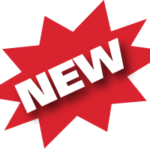 After your summit is done broadcasting, you will have a shiny, new, email list of followers! They will be enthusiastic to learn more about your topic and seek more of the content you offer. This is absolutely a great opportunity to influence this email list and
After your summit is done broadcasting, you will have a shiny, new, email list of followers! They will be enthusiastic to learn more about your topic and seek more of the content you offer. This is absolutely a great opportunity to influence this email list and 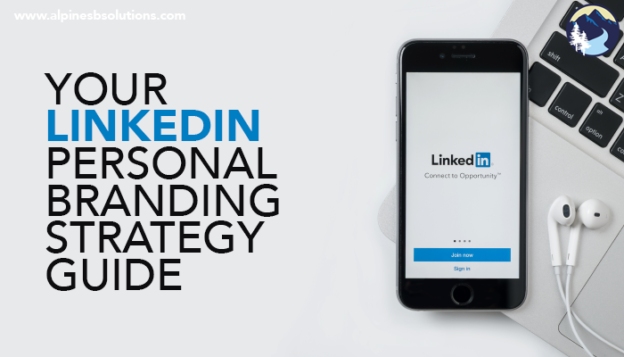
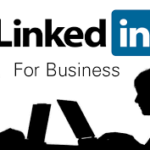 As an entrepreneur, you are already stretched pretty thin. I get it! The last thing you want is another item on your to-do list. Fortunately, this one really does only take a few minutes a day. If you need to, download the LinkedIn app on your phone so you can update it while waiting in line at the grocery store or during your commute.
As an entrepreneur, you are already stretched pretty thin. I get it! The last thing you want is another item on your to-do list. Fortunately, this one really does only take a few minutes a day. If you need to, download the LinkedIn app on your phone so you can update it while waiting in line at the grocery store or during your commute. At some point each week, make sure you are completing the following tasks.
At some point each week, make sure you are completing the following tasks.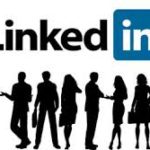 Each month, take the time to accomplish the following tasks.
Each month, take the time to accomplish the following tasks. Each quarter, take time to comb over your profile and make any necessary tweaks.
Each quarter, take time to comb over your profile and make any necessary tweaks.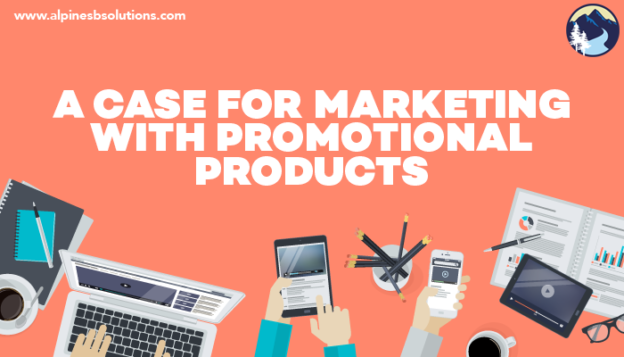
 The cost per impression tends to be among the lowest for promotional products compared to other methods of advertising.
The cost per impression tends to be among the lowest for promotional products compared to other methods of advertising. For raising awareness among the target audience, promotional products lead to
For raising awareness among the target audience, promotional products lead to They say
They say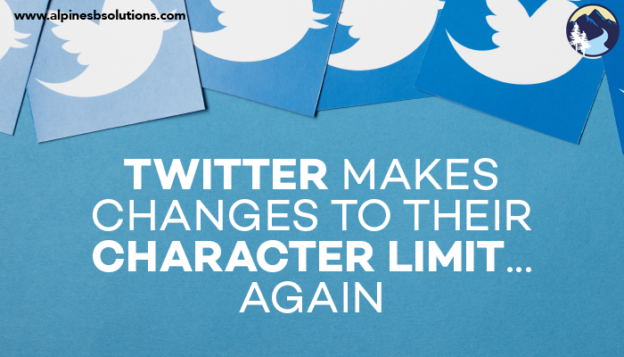
 Previously, a reply would involve a tweet beginning with “@username” and then the user’s message. The username character count went towards the 140-character limit. If a few users were involved in the conversation, the character total quickly got eaten up. It also made it difficult to actually see the message content since it was after a long string of usernames
Previously, a reply would involve a tweet beginning with “@username” and then the user’s message. The username character count went towards the 140-character limit. If a few users were involved in the conversation, the character total quickly got eaten up. It also made it difficult to actually see the message content since it was after a long string of usernames Twitter’s goal is to make conversations easier to follow, allowing users to focus on the discussion of the tweets and not the lists of those in the discussion.
Twitter’s goal is to make conversations easier to follow, allowing users to focus on the discussion of the tweets and not the lists of those in the discussion.  In the past few years,
In the past few years, 